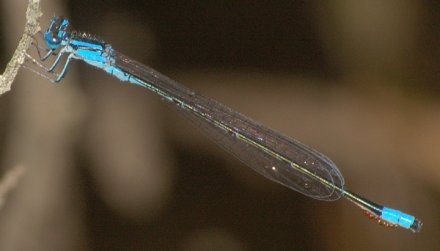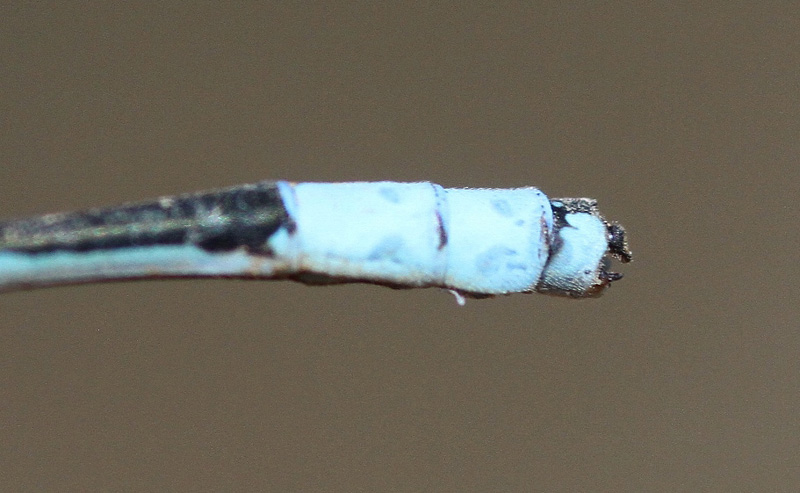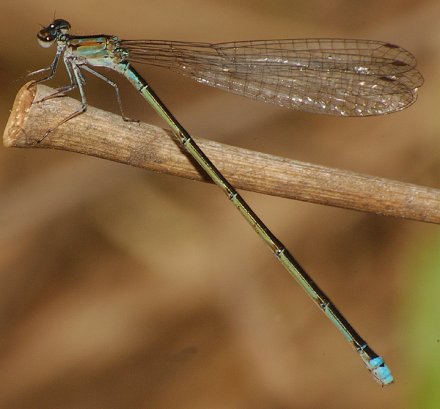




Coenagrionidae, Pond Damsel Family
Possible Species

The bluets form a group of about 17 similar species in Wisconsin in which the males usually share the characteristics of having blue and black stripes on the thorax, and blue and black markings on the abdomen. In-hand examinations are usually needed to identify them, although they can be grouped into subcategories based on the amount of black showing on the abdomen. Males are easily identified, under magnification, by the shape of their terminal appendages. Females are generally duller than males, and they are more difficult to identify, which is accomplished by subtle differences in the shape of the mesostigmal plates on the top of the thorax. Generally, males are bright blue while the females are green or yellow-green or blue. There are some species that are yellow-orange, a mix of various colors, or black with some blue.
Status-Global/State:
Distinguishing Characteristics:
The male of this species is black-type bluet because of its largely black abdomen. The male's blue thorax has a broad black mid-dorsal and thin black shoulder stripes. The abdomen is mostly black above except for the blue just before the black tip. The female is similar but with pale areas dull blue, and the abdomen with a black dorsal spot on a blue tip. The body length of a turquoise bluet varies from 1.1 to 1.4 inches. The male is similar to the stream bluet male but with no blue rings on the abdomen.
Description of Habitat/Range:
Ranging throughout eastern United States, this species can be found at slow parts of streams, sloughs, well-vegetated ponds and lakes. Although there is a historical record from Douglas County, it may be based on a misidentification. Because of the current knowledge about its range, we think it is unlikely that this species occurs in Wisconsin.
Flight Season:
The flight period, throughout its range, may be from late May to late July.
(Click on photos to enlarge)

